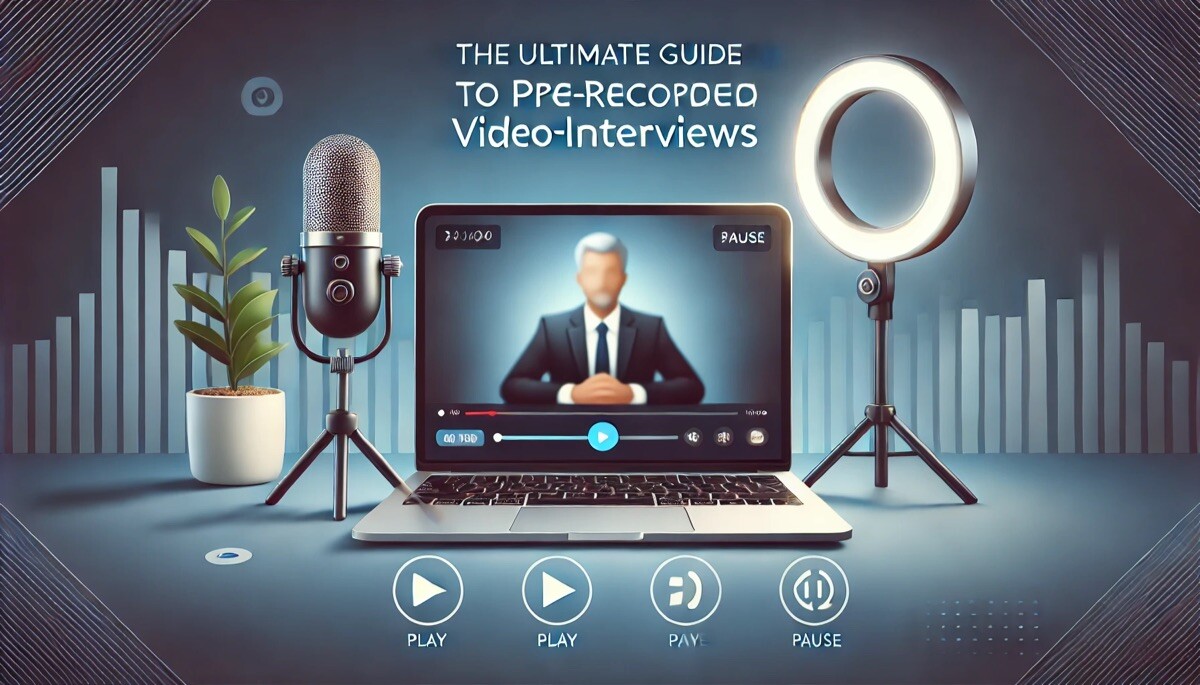
The Ultimate Guide to Pre-Recorded Video Interviews
Pre-recorded video interviews have become a popular hiring tool, allowing candidates to answer set questions on video without an interviewer present. Employers can review these responses at their convenience, streamlining the recruitment process and improving efficiency.
This pre-recorded interview format enables companies to screen candidates quickly while giving applicants the flexibility to record their answers at a time that suits them.
How Pre-Recorded Video Interviews Work
- Employers create a list of job-relevant questions.
- Candidates receive a link to the video interview platform.
- They record their responses within the allotted time.
- Employers review submissions and shortlist candidates.
Advantages of Pre-Recorded Video Interviews
1. Saves Time and Resources
Recruiters can assess multiple candidates without scheduling live interviews, making the hiring process faster and more efficient.
2. Offers Flexibility for Candidates
Applicants can complete the interview at a convenient time, reducing scheduling conflicts and improving the candidate experience.
3. Ensures Consistent Evaluation
Every applicant answers the same set of questions, creating a fair and structured comparison process.
4. Allows for Multiple Reviews
Hiring managers can revisit interviews to gain deeper insights before making a decision.
Best Practices for Candidates
1. Prepare Thoroughly
- Research the company and job role.
- Practice responding to common interview questions.
- Structure answers clearly and concisely.
2. Check Your Equipment
- Test your camera, microphone, and internet connection.
- Ensure the interview platform functions properly.
- Use a computer for better video and audio quality.
3. Set Up a Professional Space
- Choose a quiet area free from distractions.
- Use good lighting to ensure visibility.
- Keep the background clean and neutral.
4. Dress Professionally
Wear business-appropriate attire, just as you would for an in-person interview.
5. Maintain Good Communication Habits
- Look at the camera to simulate eye contact.
- Speak clearly and at a steady pace.
- Avoid reading directly from a script to keep responses natural.
Best Practices for Employers
1. Ask Clear and Job-Specific Questions
Ensure that questions align with job requirements and allow candidates to showcase their qualifications effectively.
2. Set Realistic Time Limits
Provide enough time for candidates to answer thoughtfully without feeling rushed.
3. Choose a Reliable Interview Platform
Select a interview tool that offers high video quality, ease of use, and reliable performance.
4. Establish a Fair Evaluation System
Create a standardized scoring system to objectively assess candidate responses and compare them consistently.
Overcoming Common Challenges
1. Addressing Technical Issues
Candidates may face internet or audio problems. Employers should offer technical guidelines and test their platforms in advance.
2. Reducing the Lack of Personal Interaction
Since there is no live conversation, adding a follow-up live interview can provide deeper insights into a candidate’s personality and fit.
Emerging Trends in Video Interviewing
1. AI-Enhanced Evaluations
More organizations are using AI to analyze facial expressions, tone, and speech patterns for improved assessment.
2. Increased Adoption Across Industries
As remote hiring expands, more industries are integrating pre-recorded video interviews to widen their talent pool and improve hiring efficiency.
Conclusion
Pre-recorded video interviews are transforming recruitment by making hiring more flexible and structured. Candidates can showcase their skills effectively, while employers benefit from a streamlined, fair, and scalable evaluation process. Following best practices ensures a smooth experience for both parties and leads to better hiring decisions.

